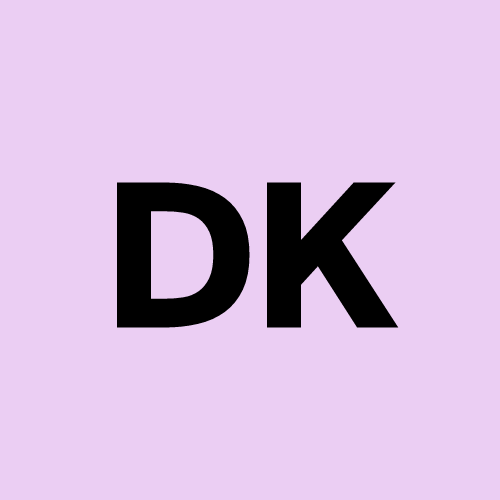Machine Translation: A Glimpse into the Future
 Dennis Kranmer
Dennis KranmerIn today’s fast-paced global landscape, translation services are the backbone of international communication, collaboration, and information exchange.
As machine translation technology continues to evolve, it’s becoming a part of everyday life, offering exciting new ways to break down language barriers.
The Current State of Machine Translation
Machine translation has come a long way in just a few years. In the early 2010s, automatic translations were clunky at best and unreliable at worst. Fast forward to today, and cutting-edge tools like Lingvanex, DeepL, Google Translate, and Yandex Translate deliver highly accurate translations in almost any language you can think of.
As of 2023, the global machine translation market was worth around $900 million. By 2030, projections show it could hit $3 billion or more.
Driving this growth are two major interconnected economic trends: the globalization of business and the explosive rise of e-commerce.
Companies aiming to expand their footprint into as many regions as possible need to translate materials into multiple languages. Traditional human translation, while precise, can cost a pretty penny and takes a lot more time.
The e-commerce boom has also fueled demand for multilingual websites, product descriptions, and marketplace content. Machine translation software helps companies adapt their materials quickly and effectively, driving the soaring demand for these tools.
Competition Fuels Innovation
The machine translation market is brimming with big names like Google LLC, IBM Corp., Microsoft Corp., Amazon Web Services, and Systran International. However, no single company holds a monopoly, which keeps the competition fierce and leaves room for smaller players like Lingvanex to make their mark.
The lack of monopolies makes this industry especially appealing to investors. Both established giants and startups are attracting significant funding, through public stock offerings and private investments. This influx of capital is expected to keep pace with the industry’s rapid growth.
Speed, Accuracy, and Productivity Gains
The rapid progress in machine translation can largely be credited to advancements in artificial intelligence, neural networks, and natural language processing. Deep learning technology has enabled systems to understand context and semantics on a much deeper level, producing translations that sound smoother and more natural.
Using professional-grade machine translation systems can cut translation times drastically compared to manual efforts, with quality often rated as "good" or even "very good" by human translators.
For businesses, this isn’t just a time-saver — it’s a money-saver. Estimates show that using machine translation can slash translation costs by 20% to 50%, depending on the complexity and subject matter.
Chasing Universal Language Coverage
In their early days, machine translation tools were limited to just a few major languages. But those days are long gone. Systems like Lingvanex and Google Translate now support over 100 languages, including some that are rarely spoken.
This vast linguistic reach allows users to translate content between exotic or uncommon languages, not just the usual suspects like English, French, or Spanish. Such inclusivity is opening new doors for global cooperation and communication like never before.
New Bells and Whistles for Machine Translation
Machine translation tools are no longer just about translating plain text. They now come packed with extra features. Many platforms can handle audio, video, images, and files in various formats, making it easier to work with multimedia content in different languages.
Take DeepL, for instance. It allows users to edit and refine translations right in the app. This makes it easier to clean up automated translations for professional purposes. Such innovations are making machine translation tools more versatile than ever.
Machine translation has also found its way into everyday apps and programs. From office suites to messaging platforms and web browsers, built-in translation features now let users quickly translate emails, documents, or web pages without breaking their workflow.
For businesses that handle sensitive data, on-premise solutions are the way to go. These systems, offered by providers like DeepL, Lingvanex, and Systran, let companies host machine translation tools on their own servers, ensuring full control over data security.
The Next Frontier: What’s Ahead for Machine Translation?
Despite its impressive strides, machine translation isn’t without its challenges. It still struggles with:
Cultural Nuance. Translating idioms, metaphors, or wordplay can be tricky.
Specialized Jargon. Handling technical or highly specific language often requires human expertise.
Even so, experts agree that the next 5 – 10 years will bring massive advancements.
We’re heading toward a future where machine translation will be good enough for most everyday needs — whether it’s reading foreign news or chatting with international colleagues. It’ll also get cheaper and faster, making it accessible to more people and businesses.
One of the most exciting frontiers is real-time speech translation. With advancements in speech recognition and voice synthesis, we’re not far from being able to talk to anyone, anywhere, in any language — almost as if we were speaking their native tongue. Imagine holding a conversation with someone halfway across the world using nothing but your smartphone or earbuds.
Another game-changer is personalization. Translation systems will learn your unique preferences, style, and even cultural context to deliver translations that feel tailored just for you. In the not-so-distant future, everyone might have a "personal translator" built into their devices.
Wrapping It Up
While machine translation won’t replace human translators anytime soon — especially for creative or high-stakes tasks—it’s becoming an indispensable tool.
By breaking down language barriers, it’s paving the way for greater cross-cultural collaboration, streamlined global business, and a world where understanding each other is easier than ever.
The future of machine translation is bright—and it’s just getting started.
Subscribe to my newsletter
Read articles from Dennis Kranmer directly inside your inbox. Subscribe to the newsletter, and don't miss out.
Written by
